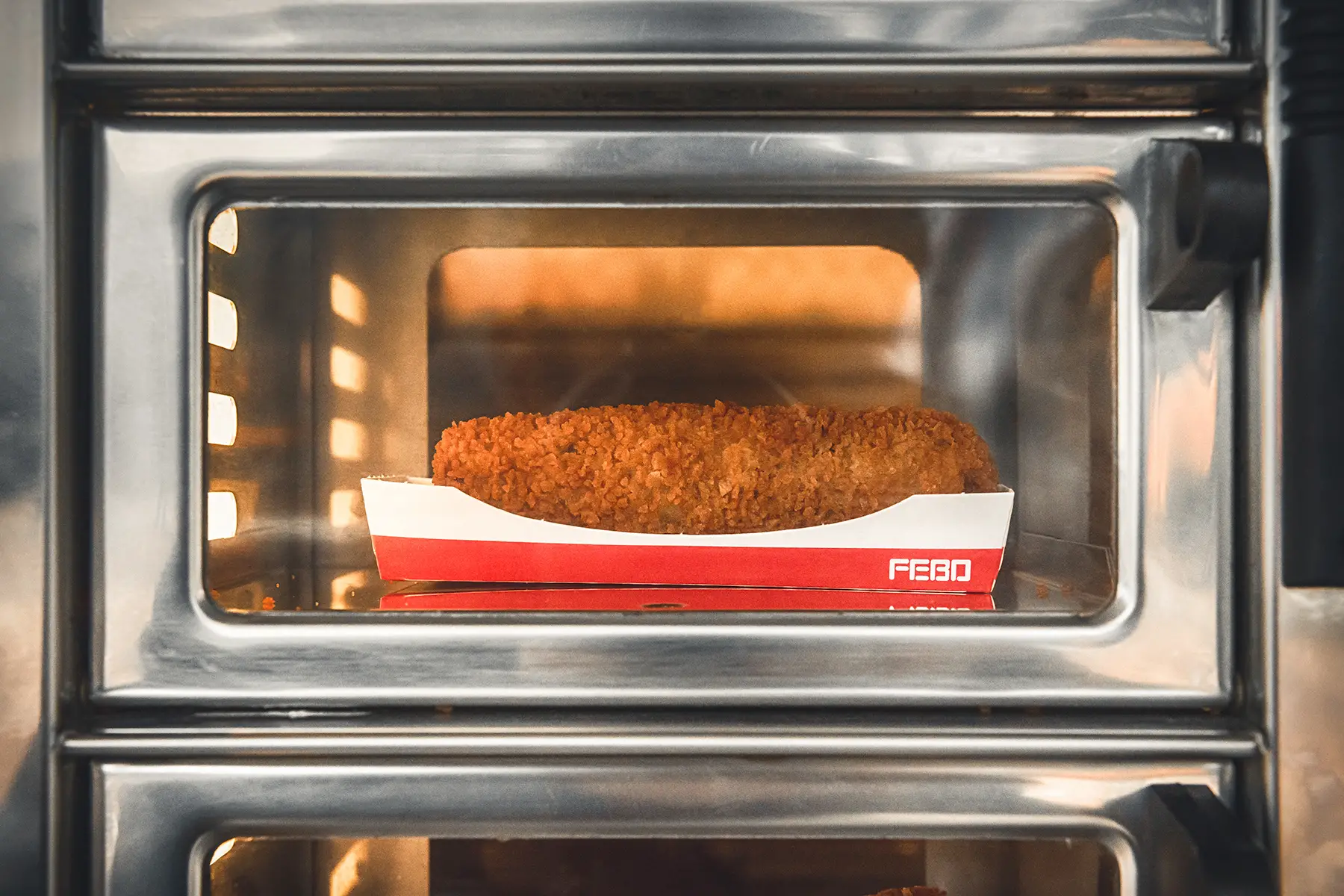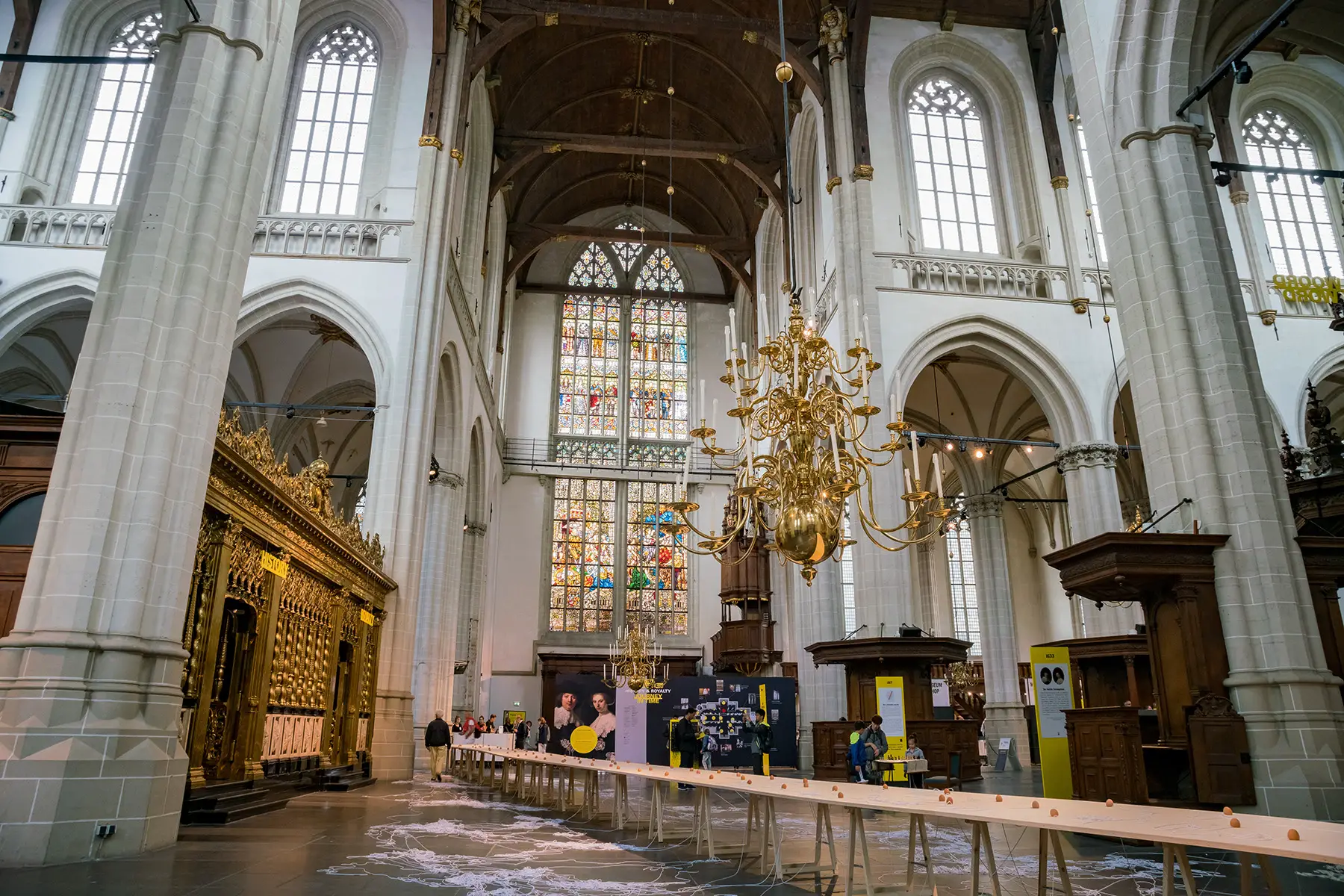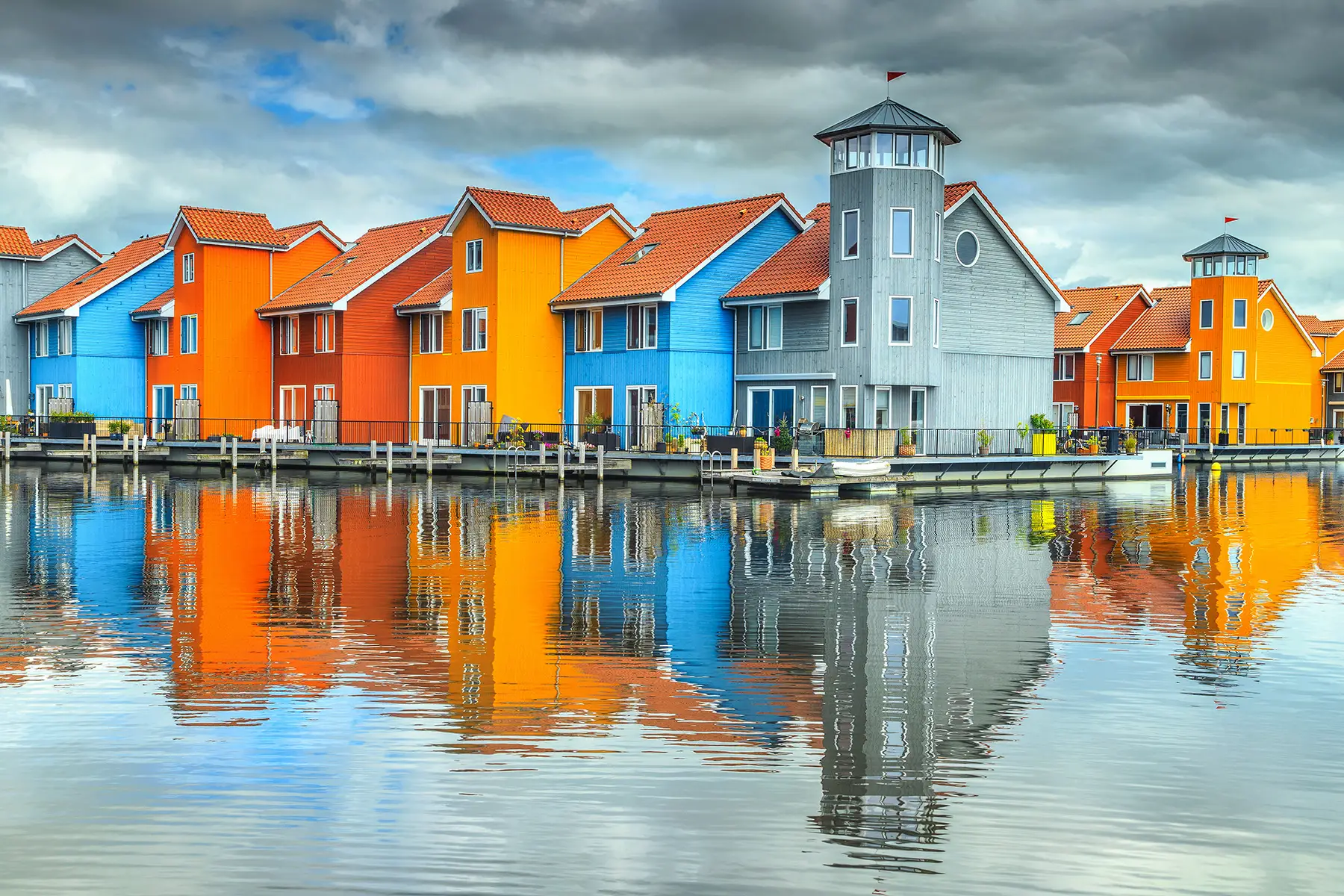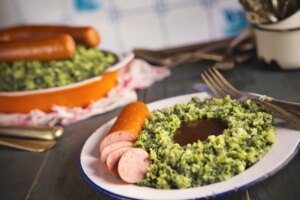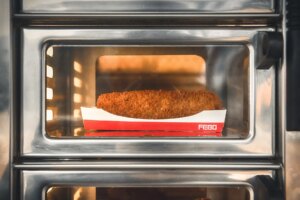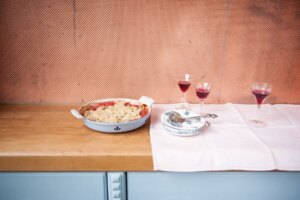When it comes to Dutch cuisine, many expats living in the Netherlands would say that these lowlands fall – ahem – fairly flat. Even Dutch people find it curious how a country that conquered the world’s spice trade didn’t manage to introduce spices into its own foods. However, the lack of exotic flavors shouldn’t deter you from tucking into the gastronomic delights on offer in the picturesque land of windmills.
On the contrary, the Netherlands offers many delicious snacks and desserts, unique seafood fare, and locally-produced cheeses. While exploring the country’s most popular dishes, you will also discover influences from Jewish, Turkish, Indonesian, and Surinamese cultures.
To give you an idea of what culinary treasures are in store, this complete guide to Dutch cuisine includes the following information:
Flink
Empty cupboards but no time to go shopping? Flink offers all your favorite supermarket products at supermarket prices, delivered directly to your door. Whatever you need – food items, toiletries, or stationery, get it delivered in minutes with Flink.
Cuisine in the Netherlands
They say that art imitates life, and this is certainly true of Dutch artist Vincent van Gogh’s famous early masterpiece, The Potato Eaters (De Aardappeleters). Completed in 1885, the painting depicts peasants gathered around a table eating potatoes. Indeed, this would have been an accurate scene in the Netherlands from the 1500s to the early 1900s. For the average person, Dutch cuisine during this time consisted primarily of porridge, bread, and potatoes. In fact, by the 1800s, Dutch people ate potatoes with every meal, seven days a week!
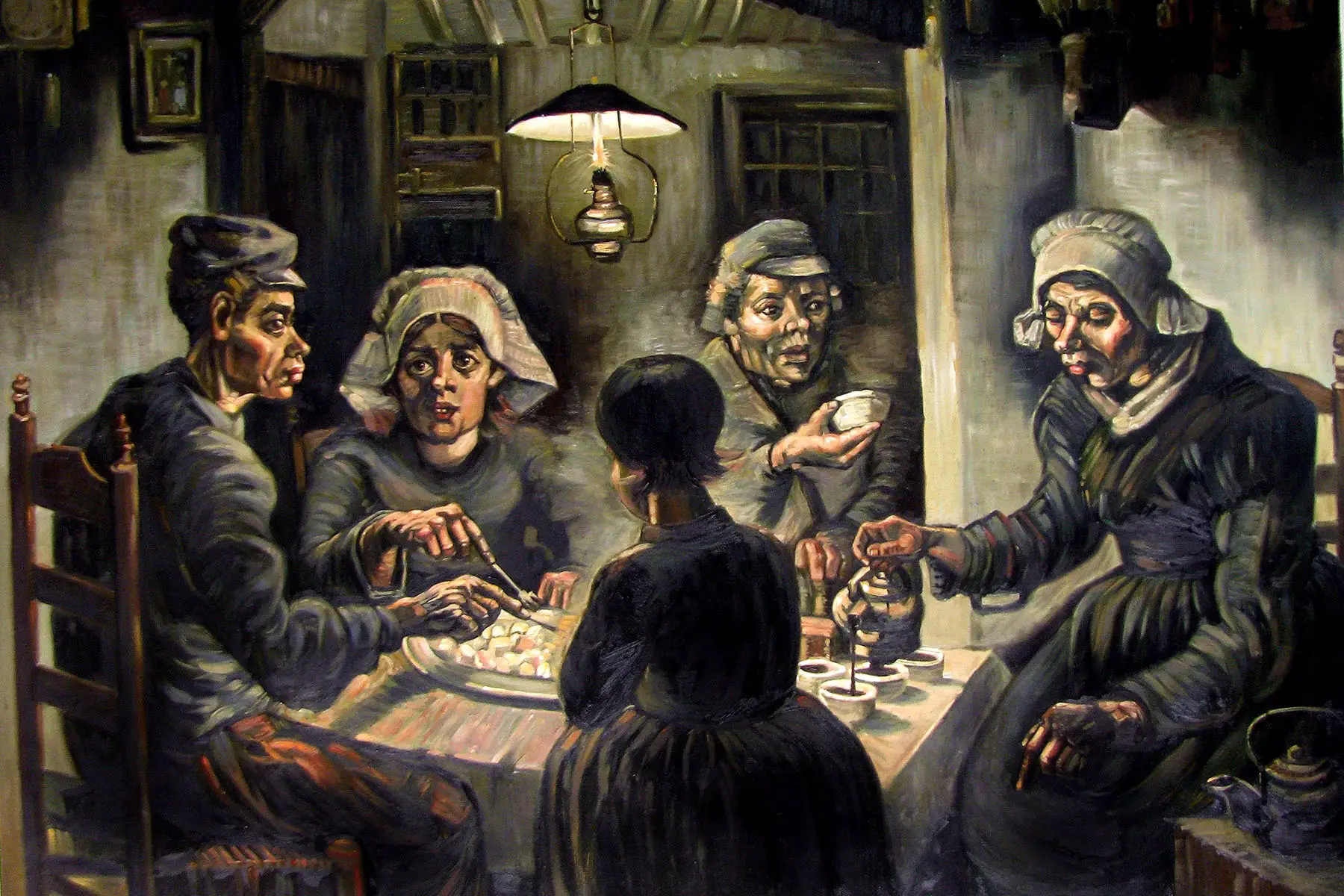
Households of the wealthy and middle class, meanwhile, painted a very different picture. The Netherlands began importing spices, sugar, coffee, tea, and exotic fruits during the Golden Age from 1581 to 1672. This period of prosperity brought fresh produce, international flavors, and lavish desserts to those who could afford such luxuries. The availability of relatively cheaper spices also resulted in a tradition of spiced cookies called speculaas.
Dutch cuisine today
Later on, in the twentieth century, young women in the Netherlands began attending schools that focused on domestic work. Here, they learned how to cook simple meals based on traditional Dutch foods which resulted in more uniformity in Dutch cuisine. The schools also emphasized frugality and nutrition.
This commitment to simple, healthy eating has remained a hallmark of Dutch cuisine, even into the 21st century. Oxfam’s Good Enough to Eat index even ranked the Netherlands as the number one country in the world for having the most plentiful, affordable, and nutritious diet. It even beat Switzerland and France, which ranked second. The Netherlands is also a world leader in agricultural exports and exported €94.5 billion worth of agricultural goods, such as eggs, meat, dairy, and produce, in 2019.
Colonization and immigration have also helped shape Dutch cuisine. The Dutch ruled Indonesia as a colony from 1800 to 1949. As a result, Dutch-Indonesian fusion recipes have come to be considered national dishes throughout the country. Suriname is another former Dutch colony that introduced its unique flavors to the Netherlands.
Furthermore, Arab and Turkish dishes have become integrated into Dutch food culture in recent decades; with kebabs, shawarma, and falafel becoming common snack foods that can be bought on nearly every street corner in cities and large towns.
The Dutch diet
A 2016 report by the National Institute for Public Health and the Environment, or Rijksinstituut voor Volksgezondheid en Milieu (RIVM) found that the Dutch are among the top three European consumers of beverages, dairy products, snacks and desserts, sugar, and fats.
The government overseer of public health and the environment also found that the Dutch typically eat six or seven times a day; including two or three snacks in between meals. Moreover, Dutch people tend to eat at home and 70% of families with children have dinner together daily, which is perhaps not surprising given the high regard for family life in the Netherlands.

The RIVM report also found that animal-based products make up approximately 25% of food and 10% of beverages in the Netherlands. That said, interestingly, around one in three people is a flexitarian; i.e., someone who does not eat meat daily. Vegetarianism, veganism, and sustainable food movements are also on the rise and are prevalent in Dutch cities.
Breakfast in the Netherlands
Unlike in some European countries, the first meal of the day doesn’t get much fanfare in the Netherlands. In fact, Dutch people aged 19 to 50 years old usually skip the meal, which is known as ontbijt. And when they do have breakfast, it tends to be high in starch and sugar. One surprising – and somewhat quirky – Dutch trend is enjoying hagelslag for breakfast. These are essentially chocolate sprinkles scattered over a buttered slice of bread.
In fact, a whopping 14 million kilos of hagelslag are eaten annually in the Netherlands. Generally speaking, the Dutch also eat breakfast on the go more often than not. As a result, sales of breakfast cereal bars and yogurt cups are on the rise throughout the country.
Lunch in the Netherlands
One of the most interesting aspects of the midday meal in the Netherlands is that workers typically take their lunch break together. This is because the Dutch value lunch as a key time for workplace bonding and socializing. Unlike in some European countries, lunch in the Netherlands is rarely a hot meal and the humble boterham (sandwich) is often the star of the show.
This simple snack consists of butter and ham (or cheese) on bread. Needless to say, if you are working in the Netherlands, you will most likely come across this during your team lunch.
Dinner in the Netherlands
Unlike many of their European counterparts, the Dutch eat their evening meal relatively early; most often around 18:00. Again, the Dutch also typically eat dinner at home with their families and enjoy spending leisurely time together afterward. While het diner can vary by culture, a favorite Dutch recipe is stamppot.
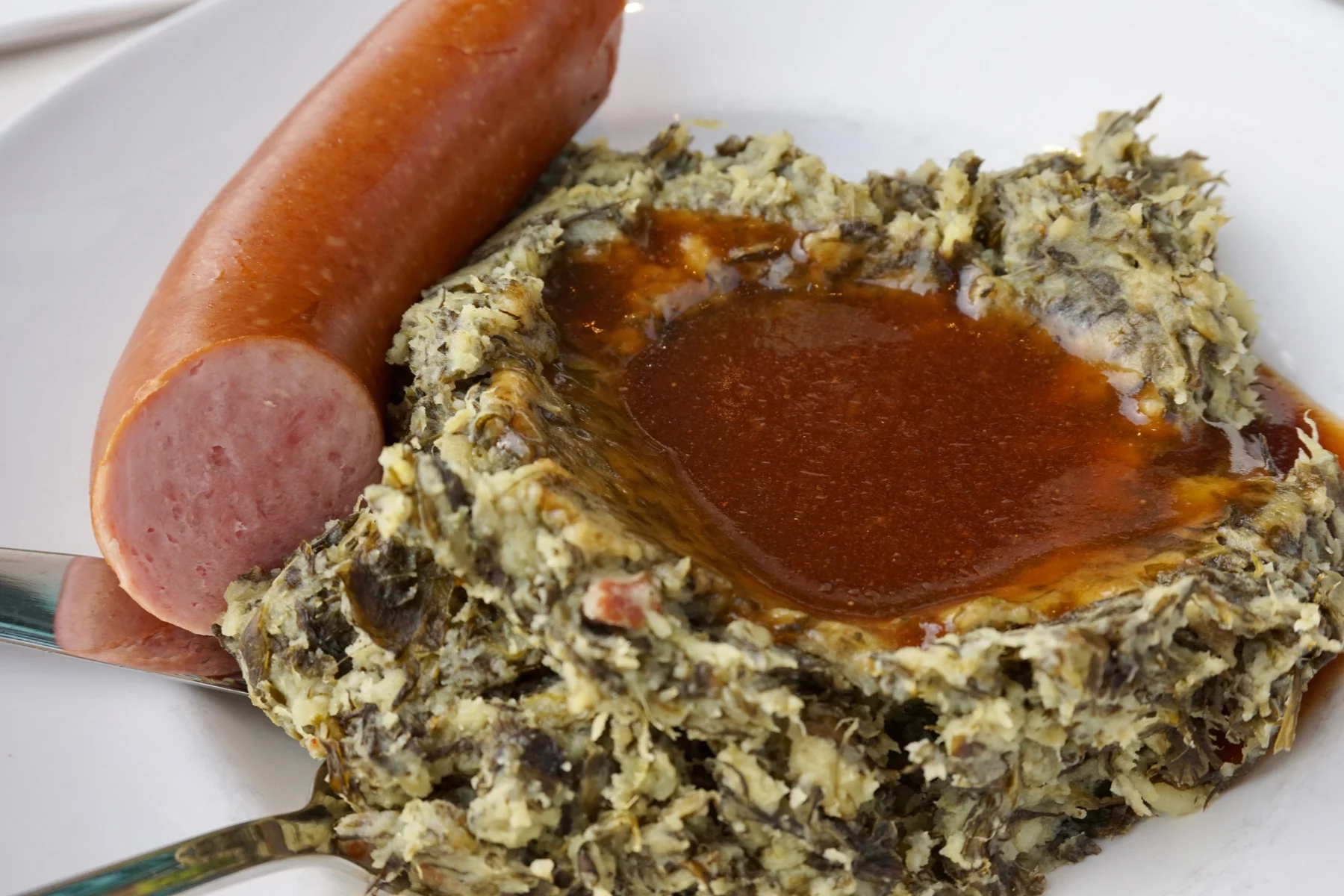
Literally translating to ‘mash pot’, this comfort food involves mashing together potatoes with other vegetables. The hearty mash is usually then served up with a big smoked sausage and gravy.
Snacks in the Netherlands
Sometime between the late afternoon and early evening in the Netherlands, the national pastime known as de borrel takes place. This is a time for socializing with friends or colleagues, sipping on local beers and wine, and munching on fried snacks. Of the borrelhapjes (snacks), the Dutch favorite is arguably bitterballen.
These are crispy, piping hot fried balls of meat or mushroom ragout that you dip in mustard. You will often see them included in an assortment of fried finger foods called a bittergarnituur. If you find yourself in need of a cure from a heavy night of drinking, then you won’t have to look any further than the Dutch-Turkish fusion snack, kapsalon.
This calorie bomb consists of fries smothered with either shawarma, kebab, or döner kebab. It is then topped with salad, cheese, and various sauces such as sambal and garlic sauce. Interestingly, the term kapsalon translates to ‘barbershop’, alluding to one of the inventors of the dish who worked as a hairdresser. Want to know more fun facts about the Netherlands? Then check out this surprising trivia.
Special meals in the Netherlands
When it comes to holidays, the Dutch tend to stick to their tradition of simplicity and frugality. However, that doesn’t mean that you won’t get to enjoy nibbling on tasty treats to mark various special occasions throughout the year.
Christmas meal
Interestingly, families in the Netherlands celebrate Christmas on either December 25 (which they refer to as ‘first Christmas day’) or December 26 (which they call ‘second Christmas day’). Dutch families often enjoy eating kerststol for brunch, which is essentially fruited raisin bread with almond paste. For Christmas dinner, they usually feast on rollade (a kind of roulade consisting of spiced pork), roasted pork or turkey, game, or other luxury meat.
Another popular Christmas tradition is gourmetten. This process of heating small pans of chopped meat and vegetables is comparable to Swiss raclette. The Dutch consider this to be one of the most gezellig (cozy) ways to share a meal; not to mention an exercise in patience, as it takes time to grill the meat to perfection. Another beloved food that Dutch people enjoy eating throughout the month of December is pepernoten. These bite-sized cookies are made of rye, honey, and anise, and are part of the Sinterklaas tradition, which takes place from mid-November until 5 December.
New Year’s Eve meal
If you live in the Netherlands, then you are likely to inhale the mouth-watering aroma of deep-fried dough at some point between Christmas and New Year’s Day. This is because the Dutch like to ring in the new year with oliebollen. Literally translating to ‘oil balls’, these yeast dough balls are prepared plain or filled with glacé fruits, apple pieces, raisins, and sultanas. If the description sounds to you like a doughnut, then you are not mistaken. This is because, in the 17th century, Dutch settlers brought this treat with them to the American colonies where they went on to change form slightly.
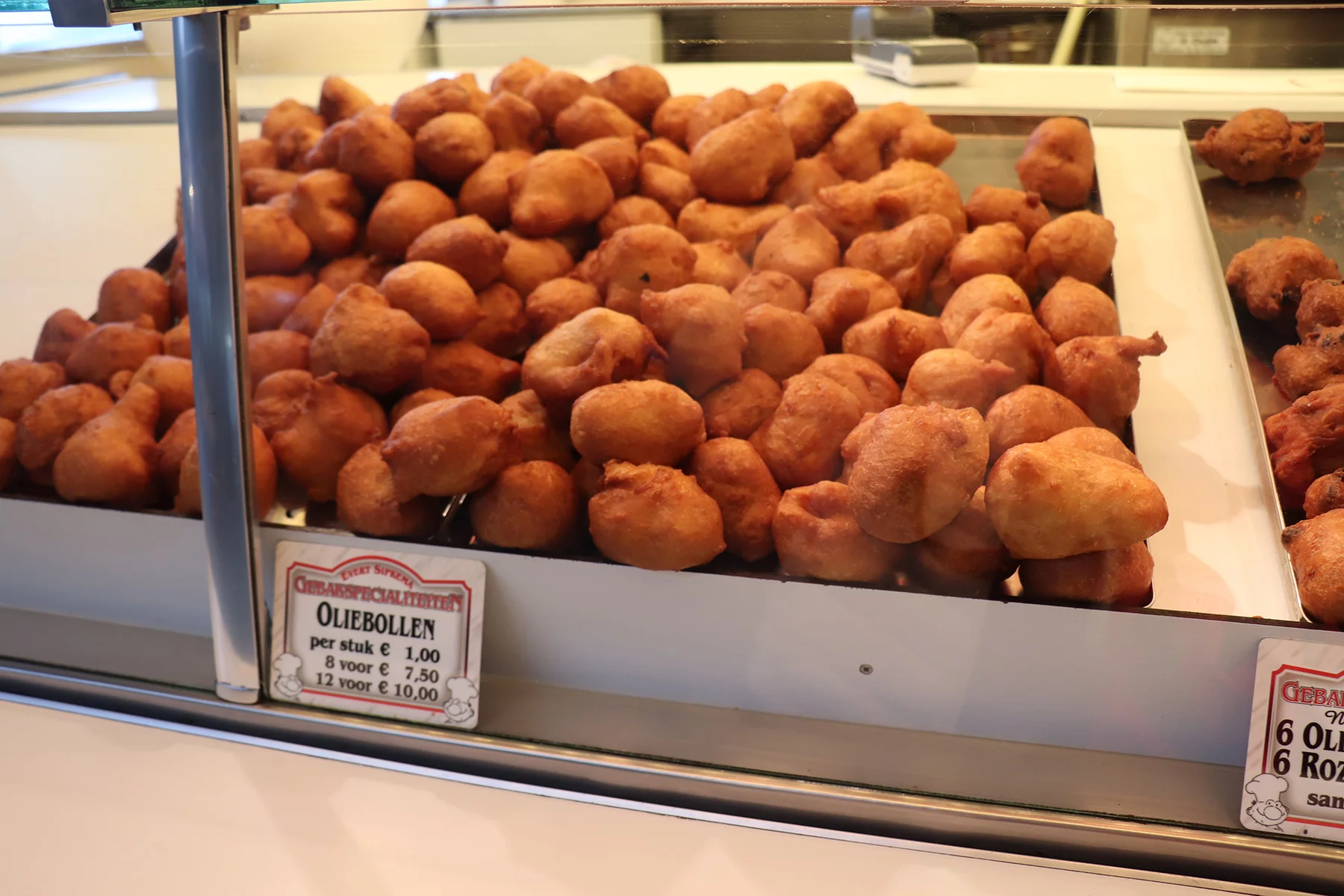
Other popular New Year’s treats in Dutch cuisine are appelbeignets (apple fritters) and ananasbeignets (pineapple fritters). In Limburg, nonnevotten, which are sweet or savory pastries, are sometimes served during New Year’s celebrations, too. That said, they are mostly eaten during Carnival.
Easter meal
While it is not always observed religiously, Dutch families often celebrate Easter Sunday with a brunch and an Easter egg hunt for the children. They usually serve rolls, cheese, ham, eggs, and paasbrood (spiced bread with raisins and dried fruit).
Interestingly, matzah crackers, which are traditionally Jewish, also have a place on the table; even in non-Jewish households. This is likely because the Netherlands was home to one of the largest Jewish populations in Europe before the Holocaust.
Birthday meal
Many expats living in the Netherlands find Dutch birthday traditions drastically different from their home countries. For example, on your birthday, you are generally expected to bring a cake for your colleagues to enjoy. Furthermore, if you invite your Dutch friends out to dinner to celebrate your birthday, they will likely expect you to pay the bill for the entire group.
On the bright side, they will also often ask what you would like to receive as a birthday gift. During more traditional birthday celebrations, family and friends sit in a circle to socialize over coffee and cake or appeltaart.
If you visit the home of a Dutch person with a newborn baby, they might also offer you a toasted bread or rusk topped with blue or pink sugar-covered aniseed sprinkles (muisjes) which represent the gender of the child. Amazingly, this sweet little Dutch tradition likely dates back to the Middle Ages.
Popular ingredients in the Netherlands
Generally speaking, the most famous dishes in Dutch cuisine contain meat, starch, and vegetables. Seafood is also a staple ingredient in largely coastal provinces, such as Zeeland. Here are some of the most common ingredients that you are likely to come across in kitchens throughout the Netherlands.
Meats in the Netherlands
The Dutch generally perceive meat as healthy to eat. As a result, the average Dutch person eats just over 77 kg of meat each year. The Netherlands is a large producer of pork (varkensvlees) and this is used to make a popular smoked sausage, called rookworst. This is often served with stamppot and hutspot. Diced pork belly, or spek, is also a key ingredient in many recipes including a thick pea soup that is known as erwtensoep or snert.
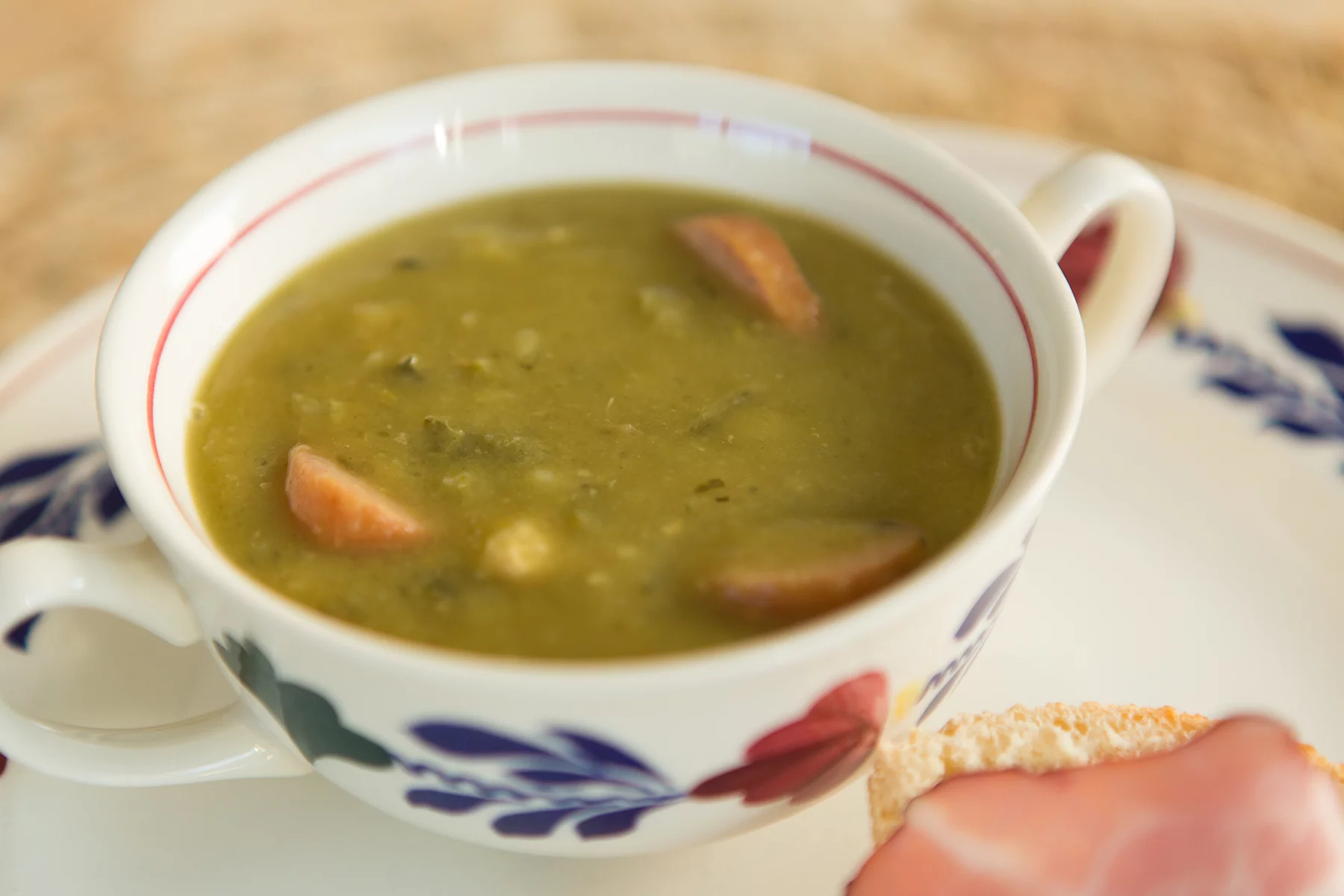
Beef (rundvlees) is another favorite meat in Dutch cuisine. During a trip to the butcher (slager) or supermarket, you are likely to come across these typical beef cuts:
- Stoofvlees (stew meat)
- Biefstuk (steak)
- Kogelbiefstuk (rump steak)
- Haasbiefstuk (tenderloin)
A crowdpleaser in many Dutch households during the winter months is hachée, a hearty stew with slow-cooked beef and caramelized onions. The Dutch are also big consumers of chicken (kip) and eat an estimated 200 million chickens a year; according to a 2019 report by Wageningen Economic Research.
Kipsaté is another example of an Indonesian dish that has become a mainstay in Dutch cuisine. To make it, you need to first grill chicken skewers, then smother them with a thick satésaus (satay sauce) made of sweet soy sauce, peanut butter, and an Indonesian chili sauce called sambaloelek. Finally, you serve the chicken skewers on top of french fries for a truly delicious Dutch snack.
Fish in the Netherlands
The Netherlands has a rich maritime history. Consequently, seafood has a prominent place in Dutch cuisine. The most common locally-sourced fish are as follows:
- Plaice (schol)
- Herring (haring)
- Mackerel (makreel)
- Cod (kabeljauw)
- Haddock (schelvis)
- Mussels (mosselen)
- Eel (paling)
Perhaps the fastest way to become truly Dutch is to eat salted raw herring (Hollandse nieuwe haring). This slippery Dutch delicacy is somewhat of an institution in the Netherlands. Technically, it is only available between the months of May and July; this is when the fish is sufficiently fat enough for Dutch taste (16% fat, to be precise). During this time, herring comes on a plate with chopped raw onions or in a sandwich (broodje haring).
To eat it like a true Dutch person, however, you have to hold the fish by the tail, throw your head back, open your mouth, and let it slide in. The Dutch are so crazy about herring that they even have a whole festival dedicated to it, called Flag Day (Vlaggetjesdag). During the celebrations, fishing boats wave flags and women dress in traditional costumes to welcome the return of the herring fleet and feast on the new season’s catch.
Vegetables in the Netherlands
The Dutch are among the world’s top vegetable growers and exporters. Therefore, you can purchase fresh vegetables year-round in the Netherlands. Root and cruciferous vegetables, in particular, are common ingredients in Dutch cuisine.
Here are some other goodies you can expect to find across the country:
- Potatoes (aardappelen)
- Carrots (wortels)
- Kale (boerenkool)
- White asparagus (Witte or Brabantse Wal asperges)
- Parsnip (pastinaak)
- Endive (andijvie)
- Leek (prei)
- Beets (bieten)
- Spinach (spinazie)
- Chicory (witlof)
- Brussel sprouts (spruitjes)
Carbohydrates in the Netherlands
Perhaps unsurprisingly given their love for deep-fried snacks, the Dutch have a high carbohydrate diet and eat bread (brood) with nearly every meal. In addition to sandwich bread, they also make a variety of specialty bread, including the following:
- Krentenbollen – slightly sweet Dutch bread rolls filled with currants and raisins
- Roggebrood – dark, dense rye bread usually eaten with spek
- Ontbijtkoek – rye cake spiced with cinnamon, nutmeg, ginger, honey, pepper, and cloves
Cheese in the Netherlands
You have probably already heard of Gouda (Goudse) and Edam (Edammer) cheese, but the Dutch have mastered many other types of cheeses. In fact, they have been producing cheese since around 400 AD. Most varieties of Dutch cheese are mild and creamy, however, some cheeses have a sharper flavor that comes from aging.
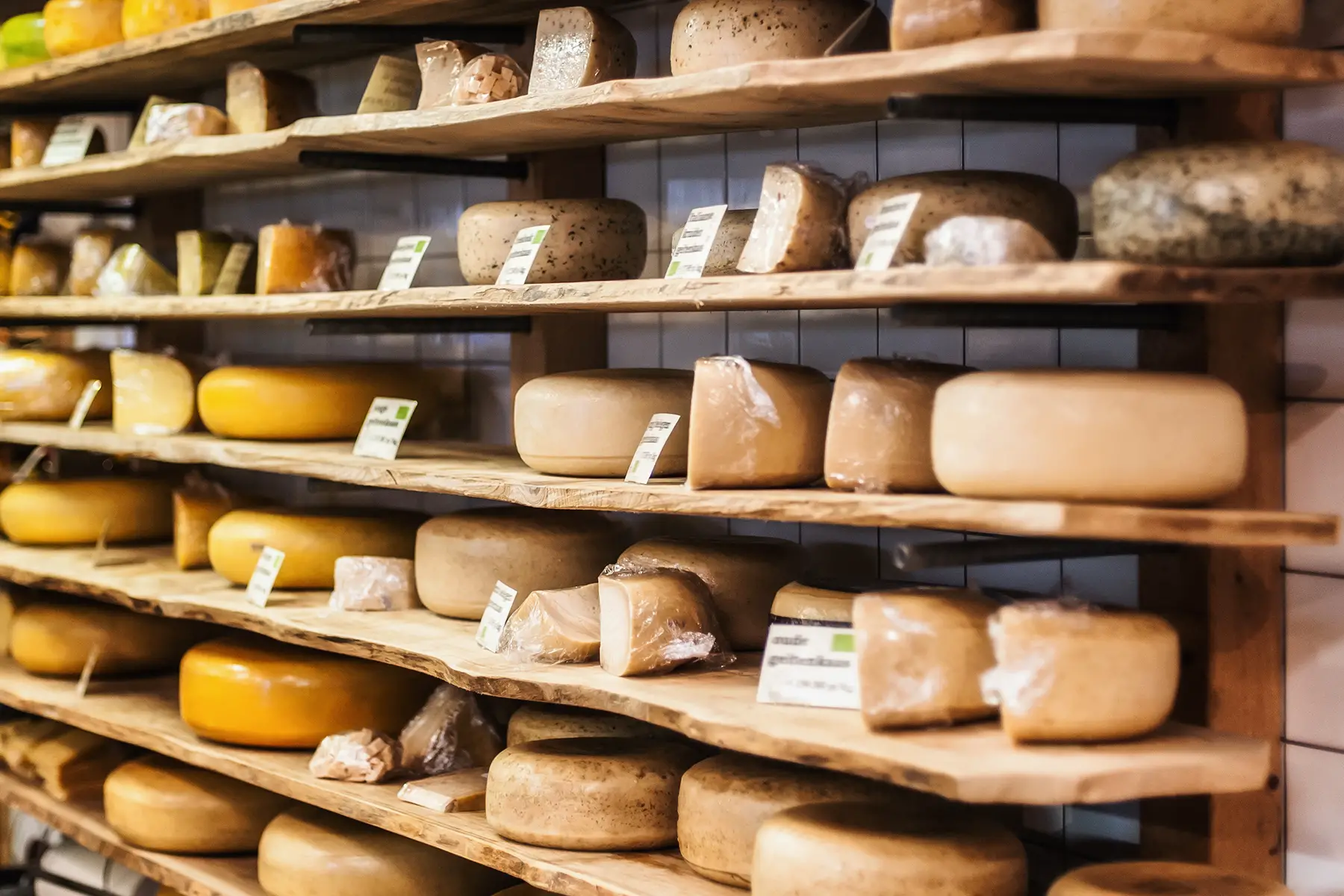
Additionally, the Dutch often add herbs such as cloves (kruidnagel) and fennel (venkel) during production. One of the most fun things to do in the Netherlands is to visit one of the country’s iconic cheese markets. Some of the most famous cheeses that originated in the Netherlands are:
- Gouda – semi-hard cows’ milk cheese
- Edam – red-waxed semi-hard cows’ milk cheese
- Beemster – hard cow’s milk cheese
- Boerenkaas – prepared using raw unpasteurized milk
- Leyden – cows’ milk cheese flavored with cumin and caraway seed
- Limburger – soft cheese with a distinctive smell
- Maaslander – trademarked Gouda-style cheese made in Huizen
Herbs, sauces, and condiments in the Netherlands
Most traditional recipes in Dutch cuisine call for spices (kruiden) that the Dutch East India Company (VOC) began trading during the Golden Age. These include cloves (kruidnagel), cinnamon (kaneel), and nutmeg (nootmuskaat). Due to the colonial connection of the Netherlands with Indonesia, you will discover some surprisingly exotic dishes, such as bami goreng, when exploring Dutch cuisine. This stir-fried egg noodle dish blends together garlic, onion, vegetables, meat, egg, and chili to offer a spicy kick.
Other spicy Indonesian specialties to look out for include rendang (meat in coconut milk and mixed spices), rijsttafel (rice served with small dishes of spiced meat and vegetables), and a spiced layer cake called spekkoek.
Many typical sauces that are used in Dutch cuisine also reflect the Netherlands’ strong ties to Asia. Sambal, for example, is an Indonesian chili sauce made from a mixture of chili peppers and other ingredients. This is also used in the recipe for bami goreng. Another popular Indonesian sauce, satésaus, is a slightly sweet and spicy peanut sauce. Like the Belgians, the Dutch tend to dip their frites in mayonnaise rather than ketchup.
In fact, the Dutch are quite famous for their patatje oorlog, a snack that consists of fries topped with a variety of condiments; including mayonnaise, finely chopped onions, and peanut satay sauce. The name, which literally translates to “war fries”, refers to the fact that eating them is a particularly messy affair. The snack itself also resembles a battlefield of condiments.
Of course, the Dutch also love their mustard, especially for dipping their bitterballen in, and this popular condiment is made in several places throughout the Netherlands. You can even visit the Doesburgsche Mustard and Vinegar Factory close to the German border.
Famous dishes in the Netherlands
Ready to try your hand at preparing some authentic Dutch cuisine? Then why not follow these easy-to-follow recipes. Eet smakelijk!
Stamppot – to make this simple and nutritious comfort food, mash together boiled potatoes and vegetables. Then, serve it the traditional way with smoked sausage or keep it vegetarian. You can also make different varieties, such as boerenkool (kale), zuurkool (sauerkraut), hutspot (onions and carrots), and rauwe andijvie (endive).
Pannenkoeken – you will need eggs, milk, flour (traditionally buckwheat flour), and a pinch of salt to make the batter for these delicious pancakes. Next, you can add a wide variety of sweet and savory toppings such as bacon, salmon, apple, cheese, or chocolate. Lastly, don’t forget to top them off with powdered sugar or stroop (Dutch syrup). Be warned, though, these pancakes are so large that people often eat them as a main course!
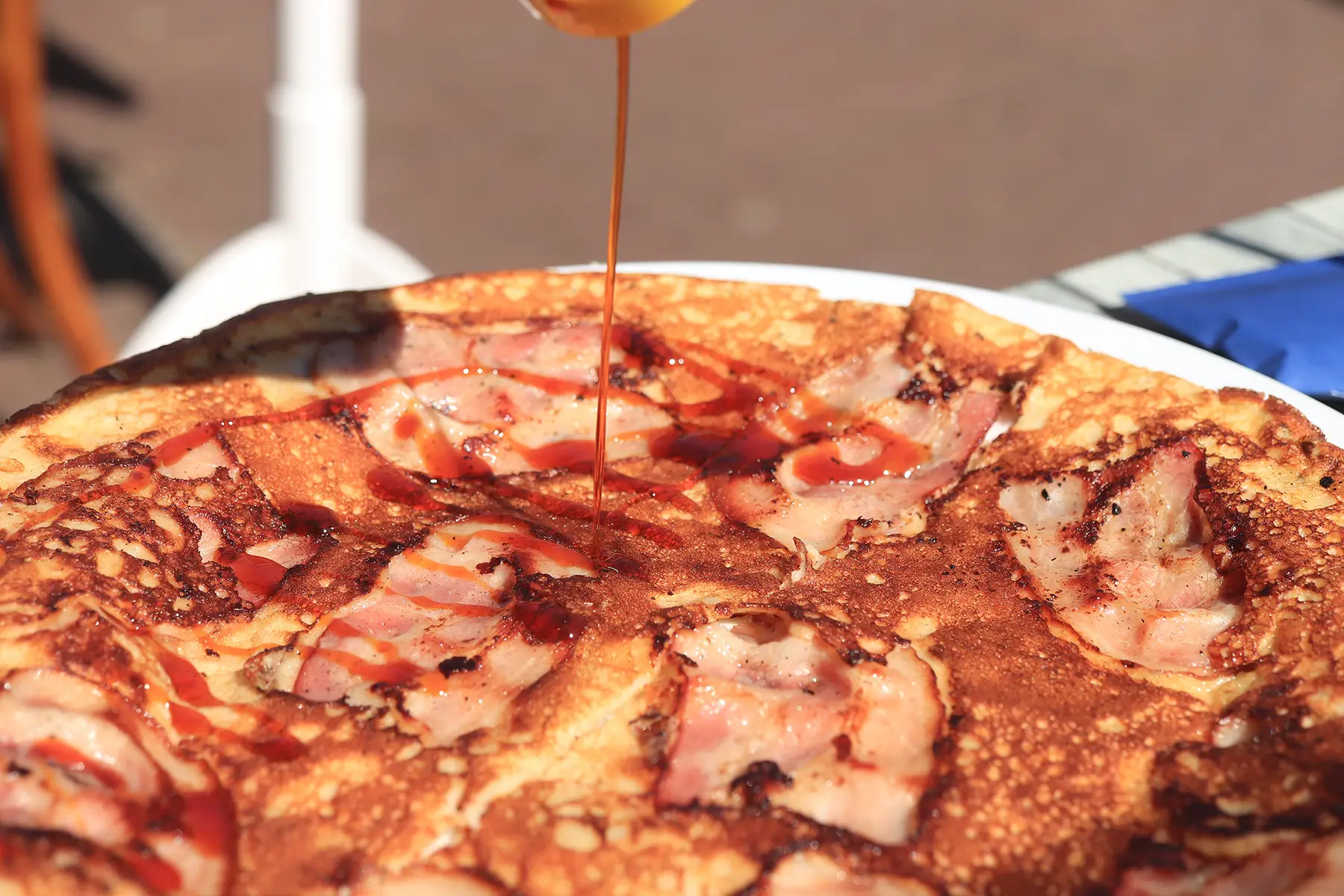
Bami goreng – this is an Indonesian-Dutch dish with stir-fried egg noodles. Using a wok, blend the noodles with garlic, onion, vegetables, meat, egg, and chili to offer a spicy kick. You can also easily make this dish vegetarian.
Famous desserts and sweets in the Netherlands
You don’t have to look far in the Netherlands to satisfy a sugar craving. In fact, there are so many sweet treats and desserts to choose from, that you might just have to try them all!
Here are some of the most famous desserts in Dutch cuisine:
Poffertjes – you will need a special pan to make these bite-sized, fluffy pancakes the traditional Dutch way. Otherwise, you will often find them at any festival or street market in cities and towns throughout the country.
Stroopwafel – although the name translates to ‘syrup waffle’, this treat is more like a soft cookie than a waffle. Your best bet is to buy them hot off the press from a vendor at a local street market.
Appeltaart – this dessert is similar to apple pie, except for the fact that you serve it chilled or at room temperature. You can make this tasty pie by using slices of apple mixed with sugar, cinnamon, lemon juice, and raisins or currants.
Regional differences in Dutch cuisine
At one time in history, waterways in the Netherlands made the regions very inaccessible from each other. As a result, people in this small country now have many distinct local dialects and traditions. The Netherlands is generally divided into three culinary regions, as follows.
Northeastern Dutch cuisine
Groningen, Friesland, Drenthe, Overijssel, and northern Gelderland are where you will discover northeastern Dutch cuisine. Game meats are more common in this region. You will also find that many towns and villages make their own special variety of dried sausage. Each of the provinces has its own rye bread recipe.
However, Fries roggebrood from Friesland has a distinct sweet taste and a deep, dark color from being baked for up to 20 hours. And if you are in the provinces of Groningen or Drenthe around New Year’s Eve, you will definitely want to try their traditional pancake-like treat called spekdik. A popular alcoholic drink from this area is Beerenburg, which is made by adding herbs to jenever.
Western Dutch cuisine
The most populated provinces of the Netherlands are where you will find the culinary delights of the west. This includes North and South Holland, Zeeland, Utrecht, and a portion of Gelderland called Betuwe. This region also produces the country’s most famous cheeses. Zeeland is also known for Zeeuwse Mosselen and other seafood.
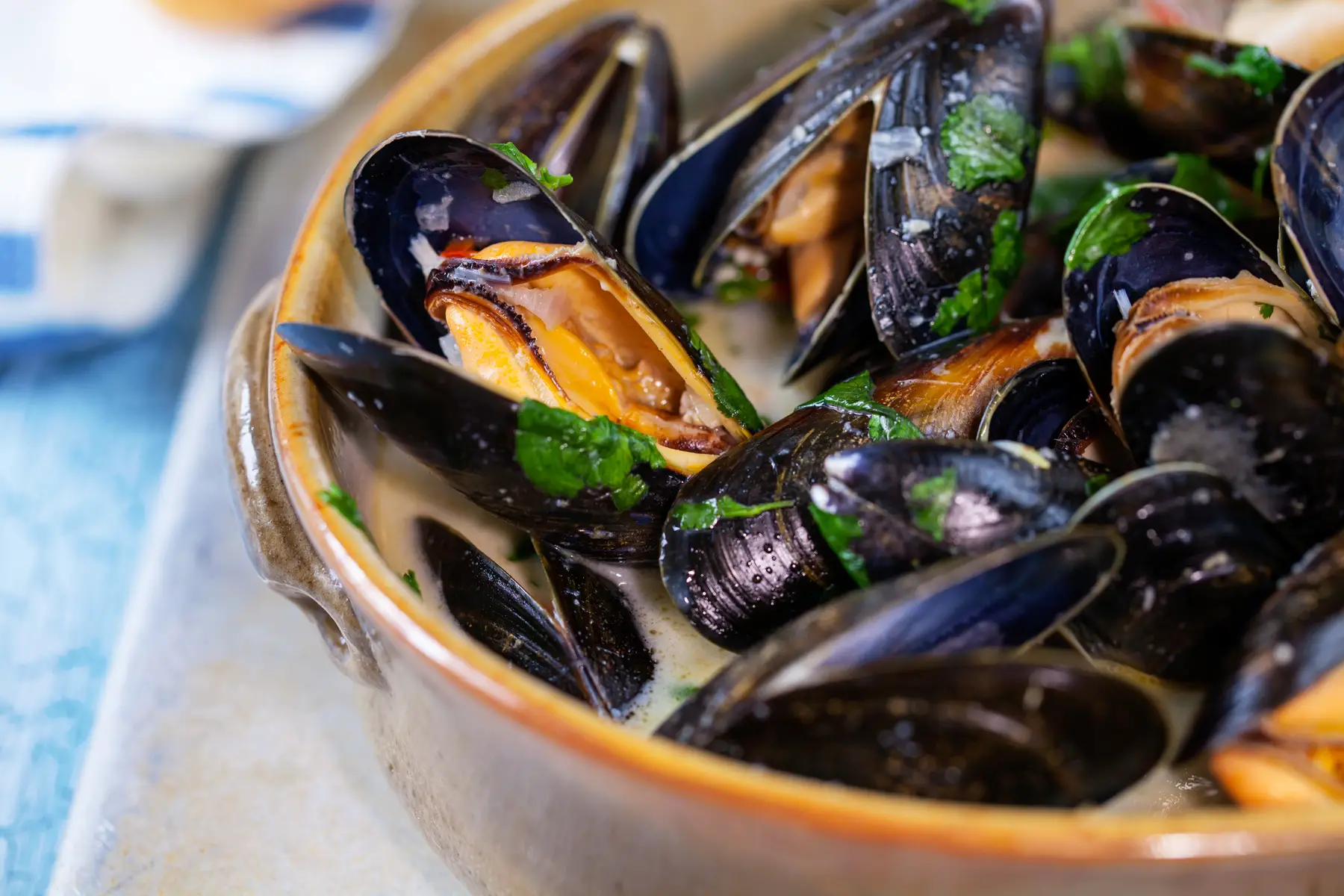
The Dutch herring (haring) also comes from the North Sea and is very popular in North and South Holland. Additionally, the Dutch developed their chocolate industry in the Zaanstreek area of North Holland. Advocaat, a liqueur made from eggs, sugar, and brandy, is also native to this region.
Southern Dutch cuisine
For haute cuisine, you will want to head to the provinces of North-Brabant and Limburg and the Flemish region in Belgium. Here you will taste rich pastries, soups, stews, vegetable dishes, and premium cuts of meat. In Limburg, you will want to sample vlaai, a pastry filled with a fruit or sugar mixture.
Moorkop and Bossche Bol, meanwhile, are typical pastries to discover in Brabant. You can also munch on savory pastries, such as the Brabantse worstenbroodje (a roll with a sausage of ground beef). This region also produces many Belgian style beers.
Useful resources
- RIVM – information on health and nutrition from the Dutch government
- Taste Atlas – learn even more about Dutch cuisine and discover the best places to eat out
- Voedselgeschiedenis.nl – delve even deeper into the history of Dutch food



